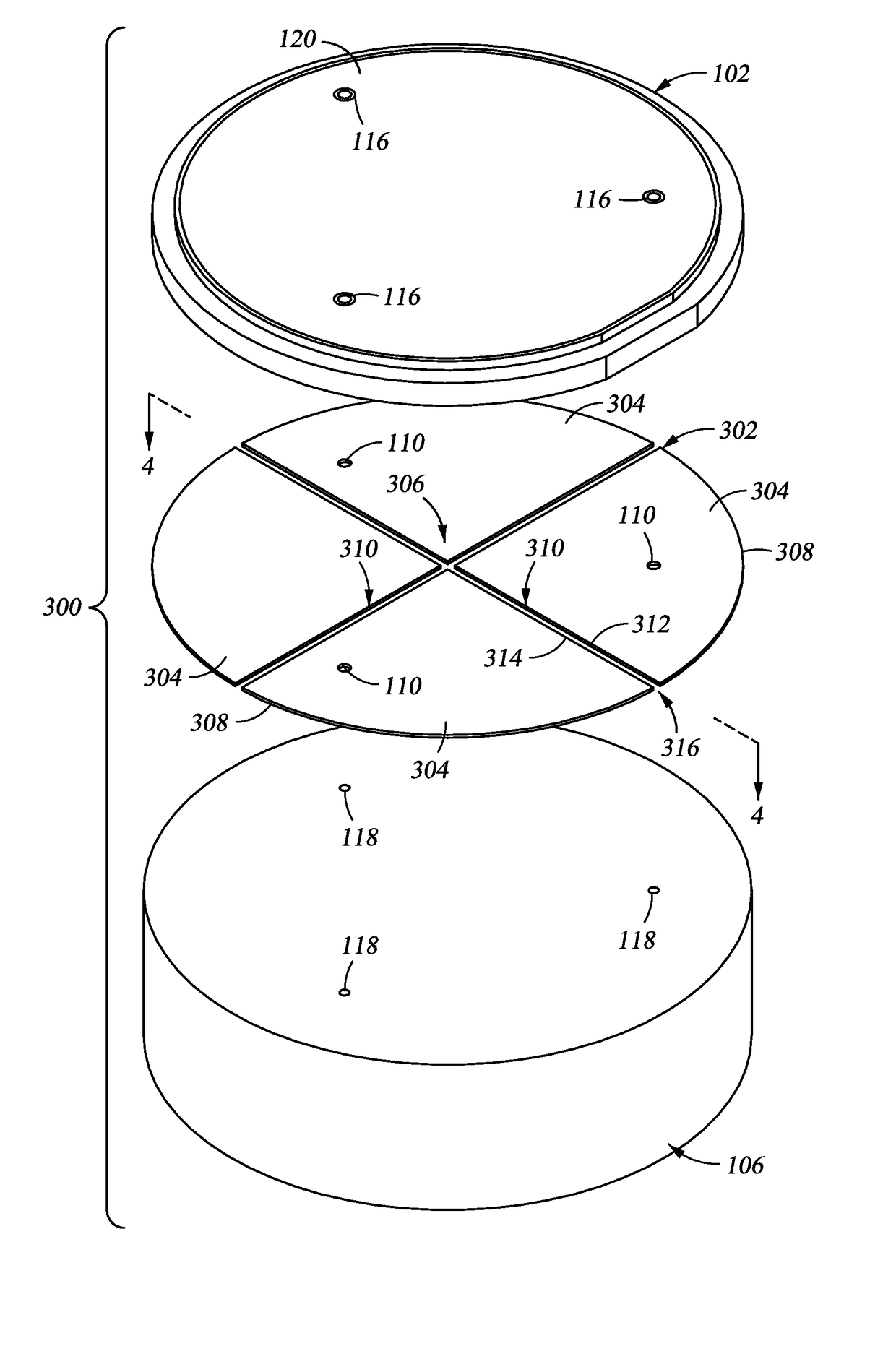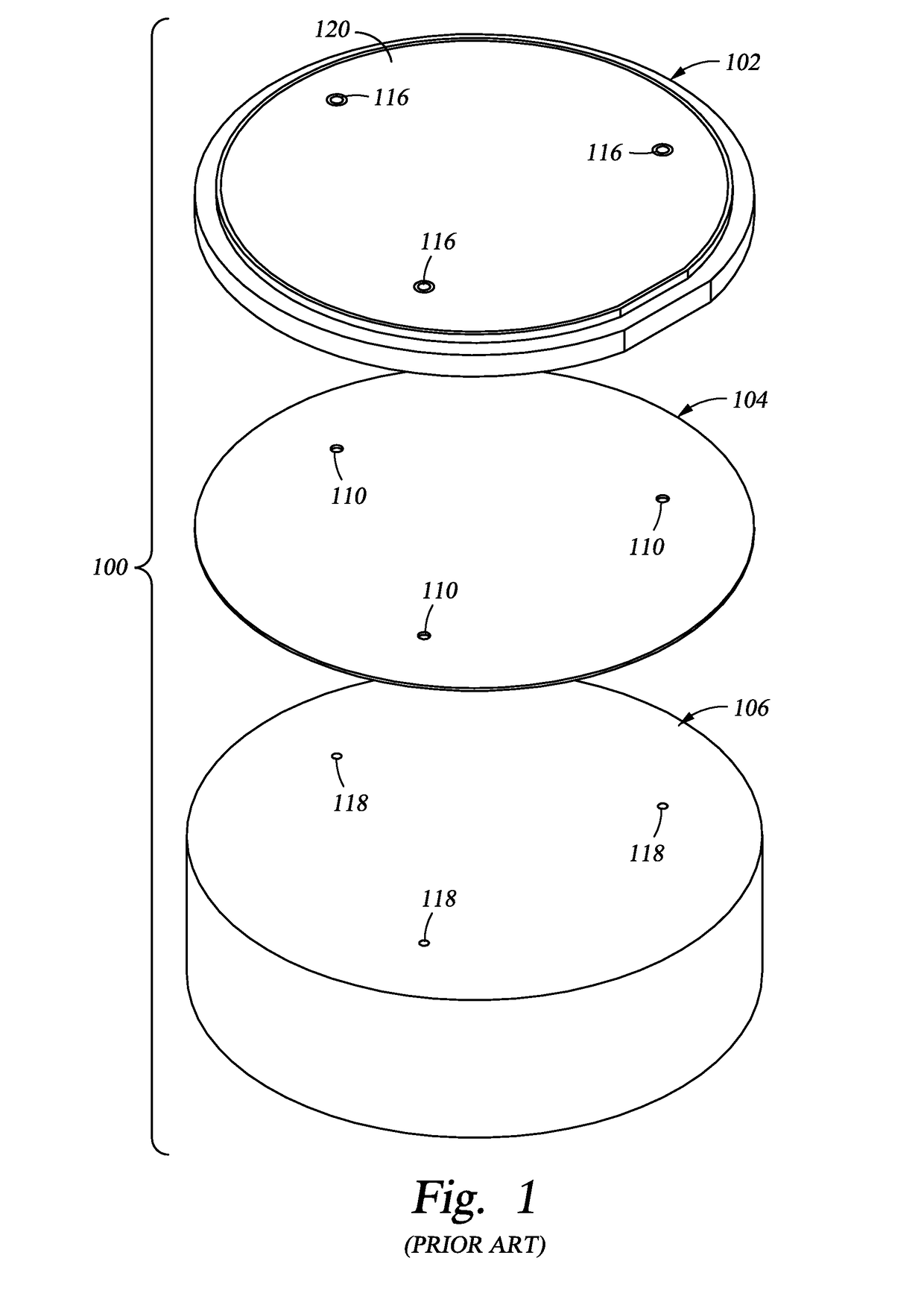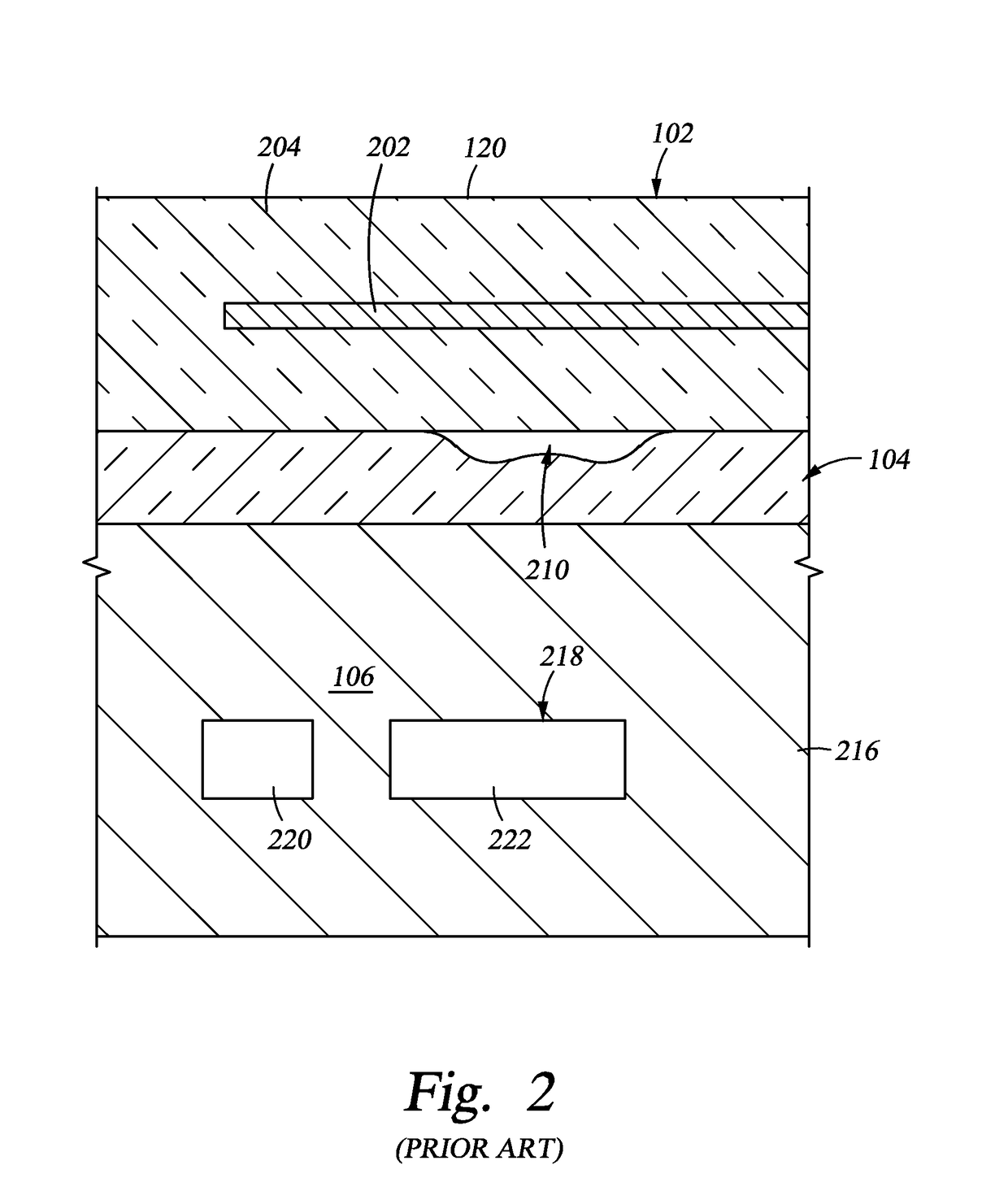Methods for bonding substrates
a technology of substrates and adhesives, applied in the direction of sleeve/socket joints, mechanical equipment, transportation and packaging, etc., can solve the problems of incomplete curing of adhesives, difficulty or inability to provide adequate moisture, cost-effective yield and productivity loss, etc., to improve the performance and performance of assemblies, improve the effect of fabrication, performance and refurbishmen
- Summary
- Abstract
- Description
- Claims
- Application Information
AI Technical Summary
Benefits of technology
Problems solved by technology
Method used
Image
Examples
Embodiment Construction
[0035]Embodiments of the invention generally provide a method for bonding substrates, assemblies fabricated by the same, along with improved methods for refurbishing said assemblies. Embodiments of the invention described herein take advantage of at least one channel partially bounded by an adhesive utilized to join two substrates. In certain embodiments of the invention, the channel is defined between adjacent segments of an adhesive layer bonding the substrates together. The channel is open to an exterior of the substrate assembly, thus providing a vent path for volatile gases outgassed from the adhesive layer to escape from between the substrates, either during curing or use of the assembly. Advantageously, the vent path enhances better curing of the adhesive layer. The vent path also prevents gas pockets from forming between the substrates which could adversely affect the temperature profile across the surface of the substrates. By improving reliability of the ability to control...
PUM
| Property | Measurement | Unit |
|---|---|---|
| thickness | aaaaa | aaaaa |
| tensile strength | aaaaa | aaaaa |
| diameter | aaaaa | aaaaa |
Abstract
Description
Claims
Application Information
 Login to View More
Login to View More - R&D
- Intellectual Property
- Life Sciences
- Materials
- Tech Scout
- Unparalleled Data Quality
- Higher Quality Content
- 60% Fewer Hallucinations
Browse by: Latest US Patents, China's latest patents, Technical Efficacy Thesaurus, Application Domain, Technology Topic, Popular Technical Reports.
© 2025 PatSnap. All rights reserved.Legal|Privacy policy|Modern Slavery Act Transparency Statement|Sitemap|About US| Contact US: help@patsnap.com



